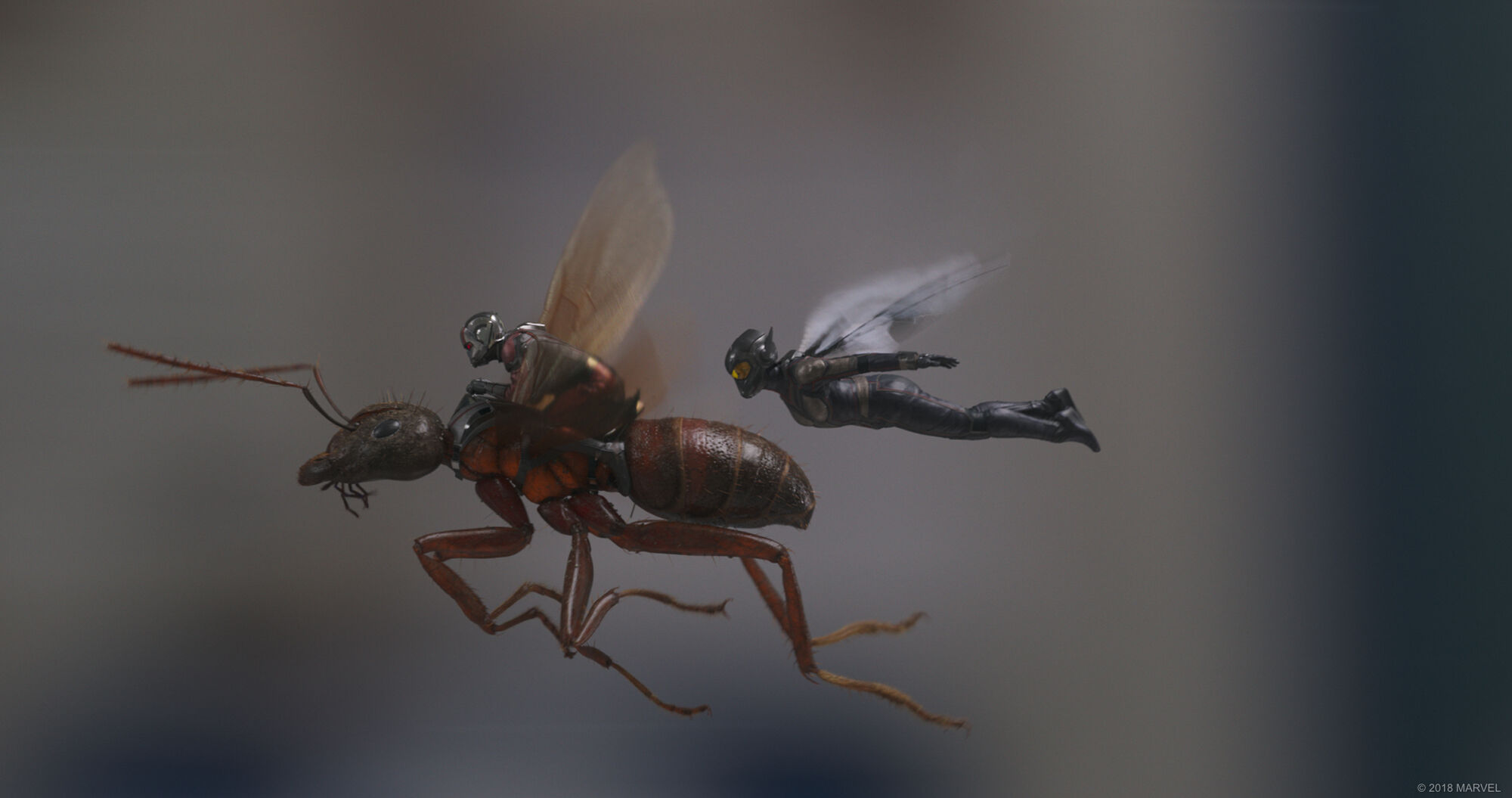Luma Pictures, the renowned independent studio, joins forces once again with the Marvel Cinematic Universe to help bring Ant-Man and The Wasp to the big screen.
Following a successful collaboration on the 2015 film, Ant-Man, Luma continues their exceptional work alongside Marvel filmmakers to bring the story of Ant-Man, its characters, settings, and the action-packed adventure to life through state-of-the-art effects and bespoke technology.
Working across the Los Angeles and Melbourne studios, Luma handled several key sequences and character developments to help create the thrilling and captivating Ant-Man and The Wasp experience for audiences.
Luma paired sequencing techniques and full CG builds to create one of the most complex scenes of the film where Ant-Man and The Wasp infiltrate Ghost’s hideout. The sequence begins as both Ant-Man and The Wasp shrink to travel through the microscopic holes in brick walls. Luma created an entire environment through CG and used their understanding of size and depth perception to create flying sequences that are captured as though a cinematographer designed them. This allowed the shots to feel realistic and give audiences a varied view of the flying characters.

The team used blue screen-full CG replacements and 3-D face replacements to bring characters to life. The in-house Luma studio was also used to shoot mocap physicality sequences.
For the quantum tunnel sequence, Luma digitally recreated an entire environment, understanding the complexity that would come with making the tunnel dynamic. The look was designed from heavily treated 3D passes and plates, leaning heavily on the composite look development lead to create the look in step with the FX artists.
“Our quantum tunnel is meant to be a version 1.0 of the technology, so it’s imperfect, messy and it’s also meant to run out of control and explode,” said Kevin Souls, VFX Supervisor.
Stephane Ceretti wanted us to explore the idea of an effect that would feel purely optical and use distortion instead of energy, all while maintaining a feeling of force and power.

Luma artists used a combination of effects to enhance key character moments in the film, showcasing their advanced ability at storytelling through CG and animation. While Ant-Man is hiding in the school, he suddenly has an issue with controlling his suit. The idea behind the sequence was to use an old technique called forced perspective, aided by modern technology, to achieve the visual gag of the giant-sized Ant-Man literally bursting at the seams of a small broom closet. To accomplish this, all the plates were designed to be shot independently and then assembled in the compositing process.
“Ant-Man was shot in a green screen scale model of the room interior and The Wasp was shot using reference props to simulate interaction,” said Souls. “The room interior itself was captured as a plate but also scanned in 3D, so we could easily recreate the shots that required a virtual camera move and to manipulate the ceiling when Ant-Man slams into it.”
The pieces were individually tracked and match-moved while another camera was created to re-film the scene and compensate for the different field of views of each acquisition camera. Luma replaced pieces of Ant-Man’s body with a high-resolution full CG asset. The mix of photography and CG was a key tool Luma used that helped trick the eye and maintain all the subtle comedic performances.

In Ant-Man and The Wasp, it was vital that the storyline and visuals continued flawlessly from the first film. Special attention was paid to creating the missile launch, which had to be replicated exactly, to produce the look and feel of the shots from the original Ant-Man.
Luma researched a Russian missile silo and began the build by first focusing on the minute details of the asset to achieve photorealism in extreme close-ups. Additionally, the artists developed volumetric for the launch plume, smoke trail, and cloud banks. The missile, Hank, and Janet assets from the original film were ingested to match the looks exactly, intercutting poses and identical actions across the edits. To tie it all together, Luma created a particle pass for the ice crystals and wispy volumetrics as they pass through the clouds.
After animation was locked, Luma made selects from high-resolution face capture photography of Michael Douglas and Michelle Pfeiffer. That footage was de-aged and then inserted into the eye shields of the characters, in both the new and old shots.

Luma’s work on Ant-Man and The Wasp showcases the studio’s in-depth understanding and ability to create full 360 scenes from character development to intuitive environments. Luma is always looking to expand their knowledge and capabilities to achieve the most challenging tasks in a realistic, authentic and imaginative way.
To learn more about Luma’s work on Ant-Man and The Wasp, head here.
